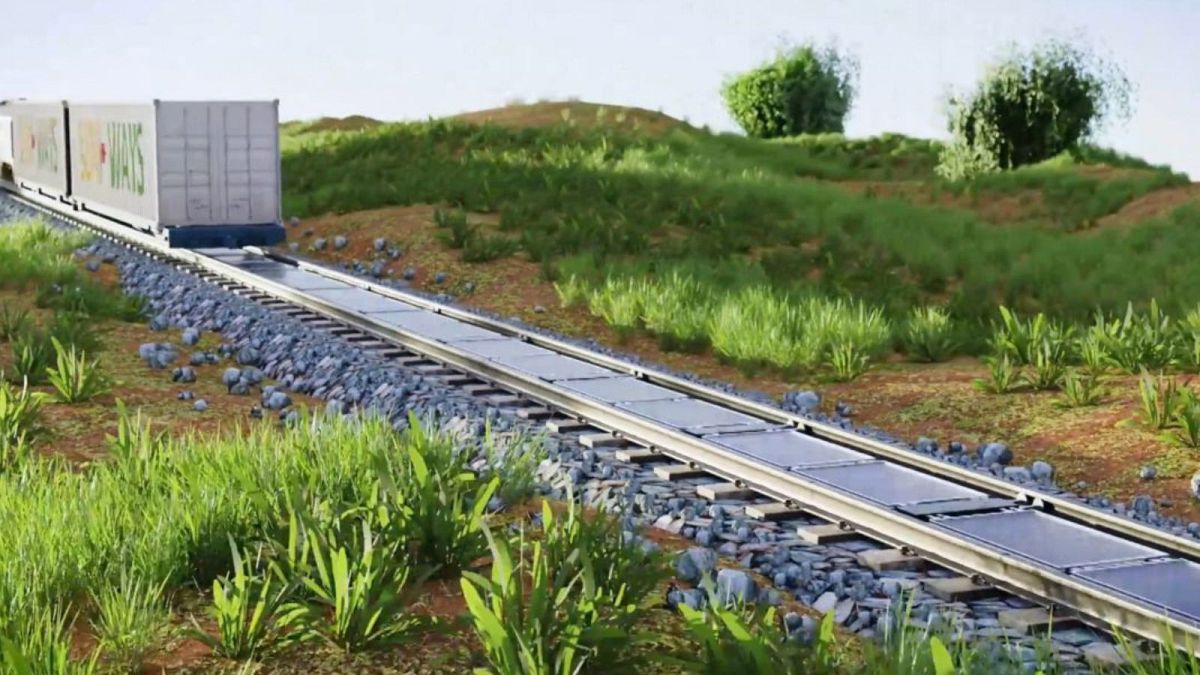After long delays, the removable PV system will finally be tested on a western track next spring.
Solar panels are set to be rolled out “like carpet” on railway tracks in Switzerland in a world-first.
Swiss start-up Sun-Ways has been given the green light for a three-year pilot project in the western canton of Neuchâtel, with work to begin in spring 2025.
As the climate crisis demands that we speed up Europe’s energy transition, developers have been seeing new potential in unusual surfaces.
Roadsides, reservoirs and farms are all finding space for solar systems, and other companies are experimenting with adding PV elements to railway sleepers too.
But Sun-Ways is the first to patent a removable system, with the help of EPFL, the Swiss federal technology institute in Lausanne.
“This will be the first time that solar panels will be installed on a railway track with trains that pass over them,” Sun-Ways CEO Joseph Scuderi told SWI swissinfo.ch.
The removable innovation is a crucial one since railway tracks need to be cleared from time to time for essential maintenance work.
How are solar panels added to tracks?
The Swiss company will use a mechanical system to install its removable solar panels.
A train developed by Swiss track maintenance company Scheuchzer will travel along the rails, laying photovoltaic panels as it goes. It’s just “like an unrolling carpet”, says Sun-Ways.
The specially designed train uses a piston mechanism to unfurl the one-metre-wide panels, pre-assembled at a Swiss factory. It claims to be able to install up to 1,000 m2 of solar panels per day.
It’s been a bumpy road to getting sign-off from authorities. The Federal Office of Transport rejected the request last year as a precautionary measure, but after ten months of building and testing prototypes, Sun-Ways has secured a permit to begin applying the tech to an open line in Neuchâtel.
During an three-year test phase, 48 panels will be added to a 100-metre section of track operated by transN, the canton’s public transport company, at a cost of roughly CHF585,000 (€623,000).
Electricity produced by the PV system will be fed into the power grid and used to power homes as feeding it into railway operations would be a more complicated process.
How much energy could solar panels on railway lines produce?
The start-up has big ambitions for its eco-innovation. In theory, panels could be rolled out across the entirety of Switzerland’s 5,317 kilometre-long railway network. The photovoltaic cells would cover an area around the size of 760 football fields.
Obviously, there’d be little point extending the solar carpet into tunnels.
Sun-Ways estimates the national rail network could produce one Terawatt-hour (TWh) of solar energy per year, equivalent to around 2 per cent of Switzerland’s total energy consumption.
Beyond Switzerland, the company is involved in similar projects being planned in Spain, Romania and South Korea.
“There are over a million kilometres of railway lines in the world,” Sun-Ways co-founder Baptiste Danichert told SWI Swissinfo last year.
“We believe that 50 per cent of the world’s railways could be equipped with our system.”
The company still has a lot to prove with its pilot project, however. The International Union of Railways previously expressed concern that the panels could suffer micro-cracks, lead to a higher risk of fires in green areas and even distract train drivers with reflections.
Sun-Ways said its panels are more resistant than conventional ones and could have an anti-reflection filter to keep out of train drivers’ eyes.
Built-in sensors also ensure they work properly while brushes attached to the end of trains could remove dirt from the surface of the panels.
Some have pointed out that ice and snowfall could stop the horizontal panels from being useful, but Sun-Ways had an answer for this too. It is working on a system to melt frozen precipitation.
